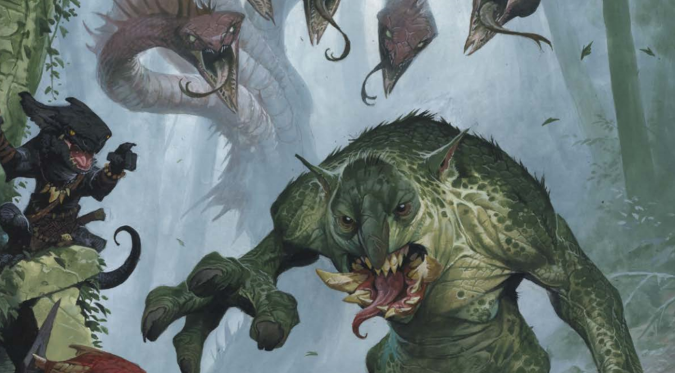Off Topic: The Pathfinder Second Edition Bestiary is a stellar streamlined reference book

Guys, one tough thing about being a Game Master is, you constantly need new things to throw at your players. Combat is at once a huge part of every game and yet often a giant pain in the butt to figure out. Having to constantly come up with your own unique monsters takes a long time — while it can absolutely be both fun and fascinating to sit down and work up a whole new kind of beastie, some times you just want a few different kinds of threats to sprinkle through a dungeon.
So, how does the Pathfinder Second Edition Bestiary shape up as a monster book? How does it work out? Before we get started, I should say up front that this is a free review copy they gave me to check out. I’m really glad they did, because I really love this book.
I feel to a degree like I don’t even need to say that this is a quality book. It’s Paizo. It’s Pathfinder. They have been making amazing books for over a decade now. Even if you’re not a fan of the game system, I don’t know anyone who has much negative to say about their art design or layout. The book has over 362 pages of monsters, ranging from basic starter creatures like Goblins, Orcs and Kobolds to huge, terrifying and frankly nearly incomprehensible threats that would fit into a Lovecraftian horror novel. One thing I find absolutely great, although not tremendously changed, is the Stat Block for the monster entries in this book.
The many beasts of the Pathfinder setting

It has everything you need at a glance, and I honestly feel like it’s one of the most elegant Stat Blocks I’ve seen in quite some time. I know this Lizardfolk’s languages, stats — specifically, what to add to a dice roll, which is far more important and which I honestly feel like all D20 games should consider going forward — why even bother having an 18 Str, when you can just have a +4 to your Str checks? It’s beautifully simple. Follow that up with its AC, Saving Throws, Hit Points, Move speed, Melee and Ranged attacks, and special abilities all in easy to locate form.
But as cool as that is, what I really like is how the book takes familiar concepts like Aboleths or Lizardfolk and adds new spins on them. The Kobold entry emphasizes Draconic lineage, for example, and makes them more interesting. It’s not perfect, however. The book says that Hyaenodon are cousins of Hyenas — and yes, I know it’s a fantasy setting, but I can’t let this go — Hyaenodon was not a close relative of modern Hyenas, it was a creodont, while Hyenas are members of the carnivora. I realize this is me being a paleontology nerd, and I seriously doubt it’ll matter that much for most players.
And the book isn’t obsessed with innovation for innovation’s sake — while there are interesting, Pathfinder specific monsters (their take on Goblins and Goblinoids is really unique, for example) you’ll be relieved to know that Dragons remain Dragons — enormous reptiles that wield terrifying power and behave in ways that will be familiar to any tabletop RPG enthusiast. There are also beasts like the Skulltaker, which fill unique niches and could certainly be a terrifying foe to a group of adventurers, or the Sinspawn which I’m familiar with from the Rise of the Runelords adventure path and was glad to see get a return entry. Well, glad in the sense that I’ll use them to mess up players at some point.
The version of the Bestiary I’m using here is a PDF, and it has a really great table of contents that lets you jump down to the specific monster you’re looking for, which is very useful for running a game. All in all, I’m really a fan of this Bestiary for the Second Edition of the Pathfinder rules. But seriously, Hyaenodon was not just a bigger Hyaena. Please don’t do that again.
Please consider supporting our Patreon!
Join the Discussion
Blizzard Watch is a safe space for all readers. By leaving comments on this site you agree to follow our commenting and community guidelines.
 @MatthewWRossi
@MatthewWRossi




